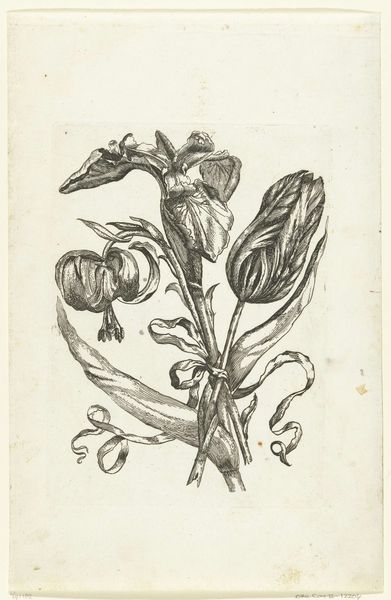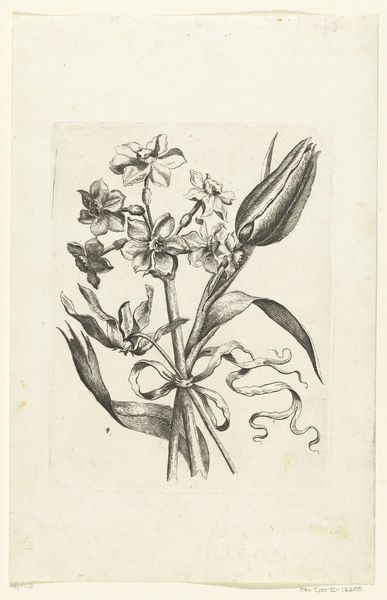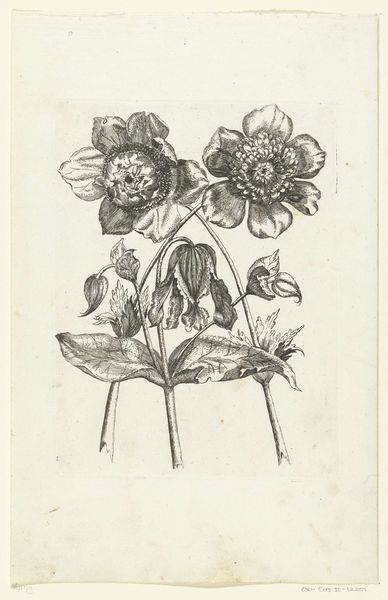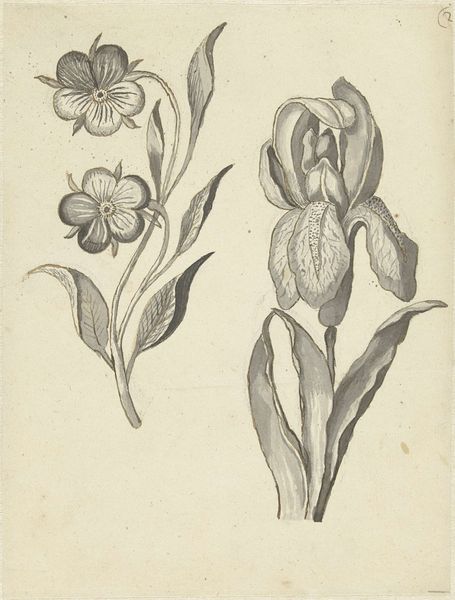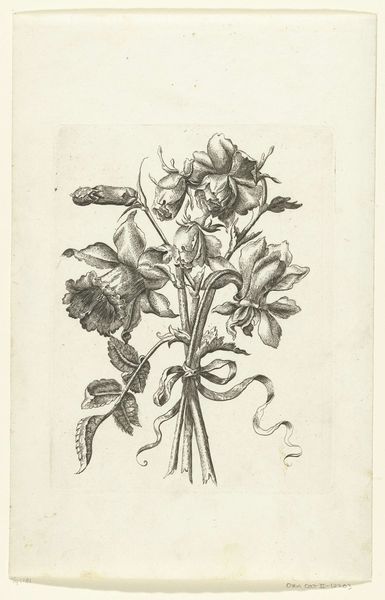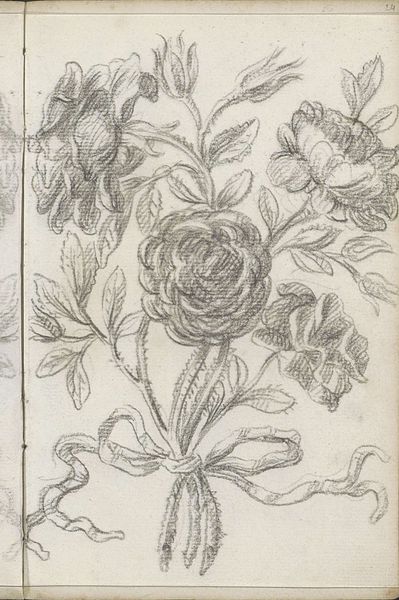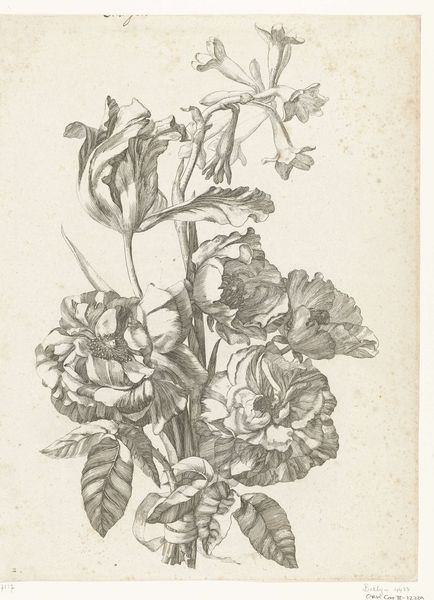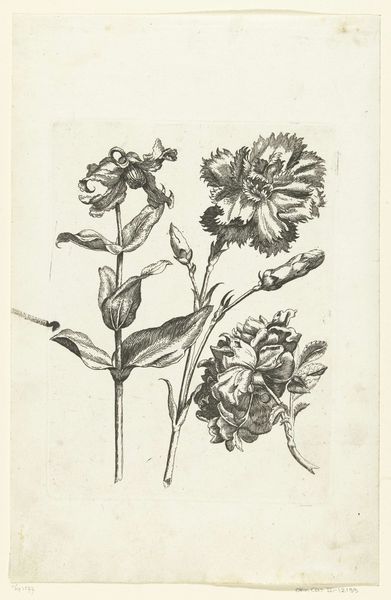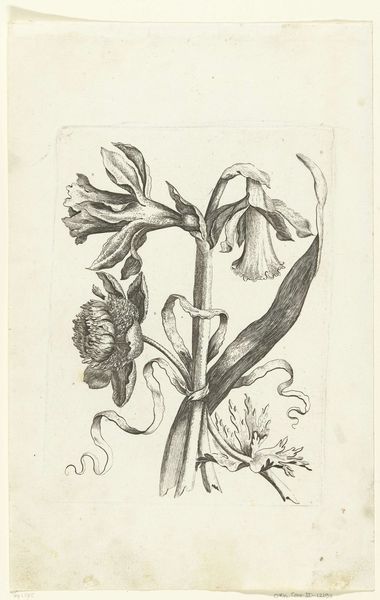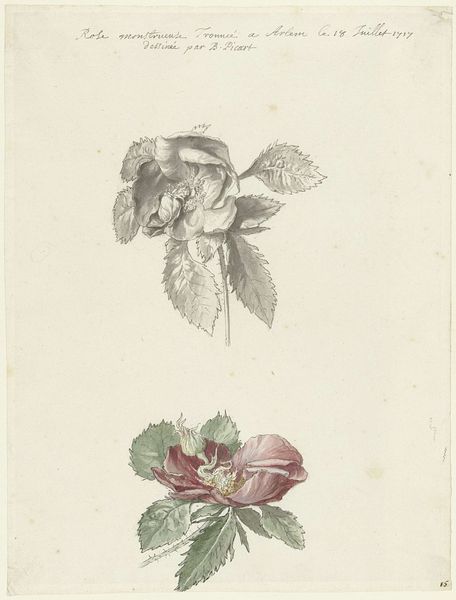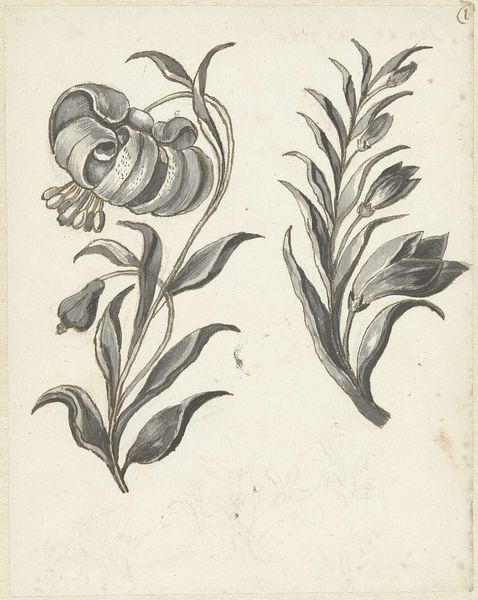
drawing, ink, pencil, pen
#
drawing
#
baroque
#
pen sketch
#
pencil sketch
#
figuration
#
ink
#
pencil
#
pen
Dimensions: height 192 mm, width 158 mm
Copyright: Rijks Museum: Open Domain
Editor: Here we have Bernard Picart’s "Two Roses," created sometime between 1683 and 1733. It’s a delicate drawing in ink, pen and pencil. There's a sort of raw beauty to the sketch-like quality; the blooms feel caught mid-growth. What strikes you when you look at it? Curator: What fascinates me are the very visible layers of labor here. We see not just the finished botanical depiction, but the processes of planning, correction, the sheer manual effort. This isn't some fleeting impression, but carefully constructed using readily available, even mundane materials like pen, ink and pencil. Consider the social context: Who was Picart crafting this for, and how would *they* have engaged with such a materially driven depiction? Editor: I see what you mean. It's like we’re looking at both the artwork *and* the artist at work. Does that emphasis on process influence how we view it in comparison to, say, a fully realized oil painting of flowers? Curator: Absolutely. The 'preciousness' shifts. Instead of solely admiring the final, idealized product, we’re confronted with the artistic process as labor. This challenges the traditional art hierarchy. Are we truly so different when focusing on the materials utilized and the creation and how it affected and reached the intended audience? Editor: So, by looking at the "how," we’re leveling the playing field a bit between fine art and craft? Curator: Precisely. And considering who had access to these raw materials, it forces us to question what defines "art" in different socioeconomic contexts. It makes you consider that the real art is labor, time, the artist. Editor: I hadn’t thought about it that way. I was so focused on the aesthetic. This perspective makes me consider art beyond the final outcome and how the choices of materials and intended purpose shape the way people interpret them. Curator: Indeed. We're forced to consider art not as an isolated object of beauty but as a result of cultural circumstances and labor, as a social product to be enjoyed.
Comments
No comments
Be the first to comment and join the conversation on the ultimate creative platform.
